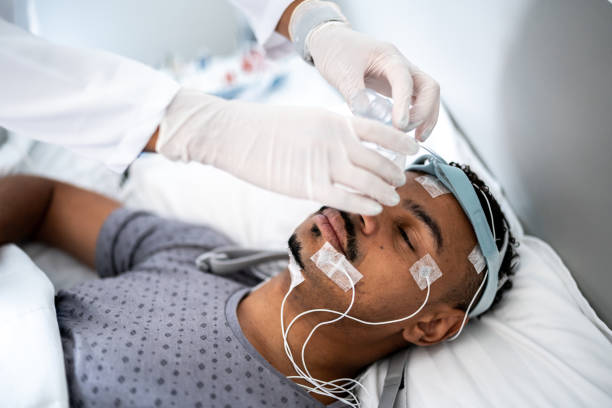If don’t feel rested during the day or have trouble sleeping at night, you might see a specialist and undergo a “sleep study” to determine if you have a disorder such as obstructive sleep apnea.
Sleep studies involve monitoring breathing, heartbeat, blood oxygen levels, brain waves and other measures, depending on the type of study. Some patients are sent home with portable monitors, while others spend a night at a sleep lab for testing.
 Home Sleep Testing
Home Sleep Testing
Traditional home monitoring measures breathing and blood oxygen levels. Home testing is typically used to assess obstructive sleep apnea, a common sleep disorder characterized by interrupted breathing during sleep. Home testing typically is recommended for patients who are generally healthy.
Sleep Lab Testing
Testing in a sleep lab involves placing sensors on the head, face, chest and limbs to record breathing, muscle and eye movements, brain wave changes, oxygen levels, blood pressure and electrical activity of the heart (EKG). It enables doctors to diagnose a range of sleep disorders, including:
- Obstructive sleep apnea
- Central sleep apnea Narcolepsy
- Periodic limb movement disorders
- Parasomnias
University Hospitals (Sleep Lab or Home Sleep Test: Which Is Right for Me? | University Hospitals (uhhospitals.org))
